Birdfinding.info ⇒ Very common in most of its limited range, where it is among the most numerous and conspicuous species. Sites where it can be found reliably include Celestún, Sisal, Chuburná, Chixchulub, Río Lagartos, and Ejido San Salvador.
Yucatán Wren
Campylorhynchus yucatanicus
Endemic to the Yucatán Peninsula, where it inhabits desert scrub, mainly within a few miles of the coast, from northernmost Campeche east to El Cuyo in Ría Lagartos Biosphere Reserve.
Identification
The only Campylorhynchus in its range. Like other members of its genus, it is a large, bold wren with a very long bill and heavily barred, spotted, and striped plumage.
It has a warm-brown crown, prominent pale eyebrow, dark-brown eyeline, and mostly whitish cheeks and throat. Usually shows a thin, black whisker mark.
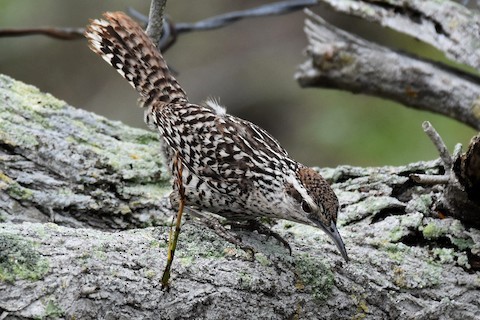
Yucatán Wren, showing warm-brown crown and heavily barred, spotted, and striped upperparts. (Ejido San Salvador, Yucatán, Mexico; April 9, 2019.) © Nick Moore
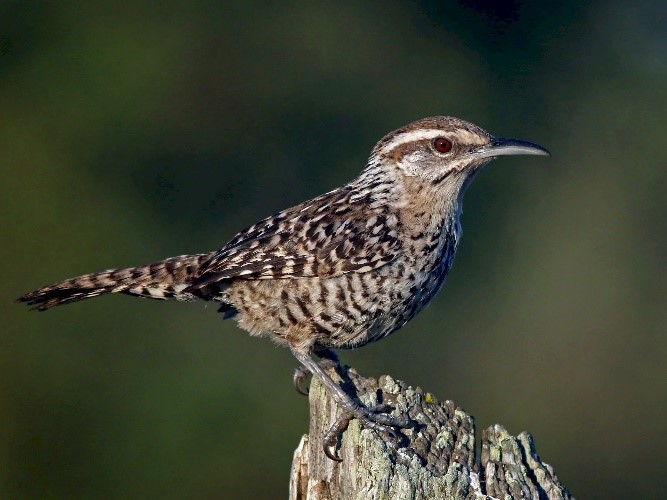
Yucatán Wren. (Río Lagartos, Yucatán, Mexico; February 18, 2014.) © Ian Davies
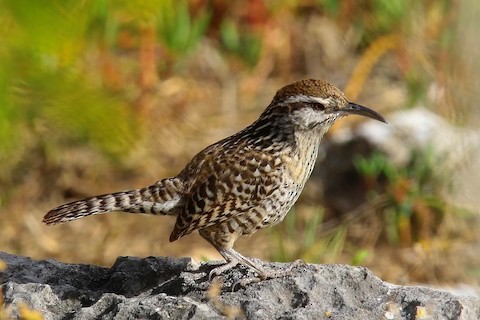
Yucatán Wren, a warm-brown individual. (Ejido San Salvador, Yucatán, Mexico; January 21, 2017.) © Arco Huang
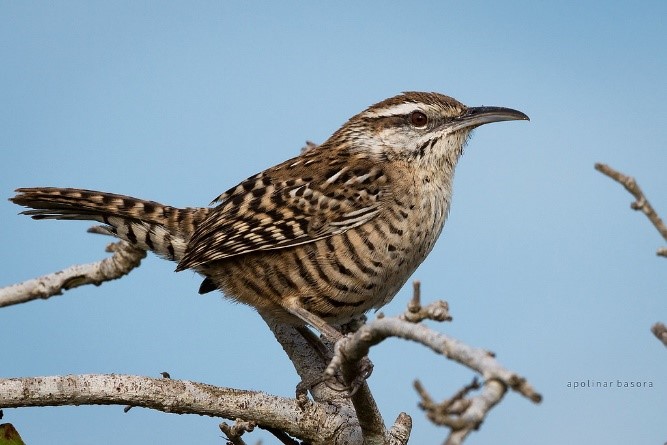
Yucatán Wren, showing heavily barred flanks. (Sisal, Yucatán, Mexico; January 31, 2016.) © Apolinar Basora

Yucatán Wren, a pale individual with sparsely barred flanks. (Ría Lagartos Nature Park, Yucatán, Mexico; February 4, 2018.) © Jeremy Coleman
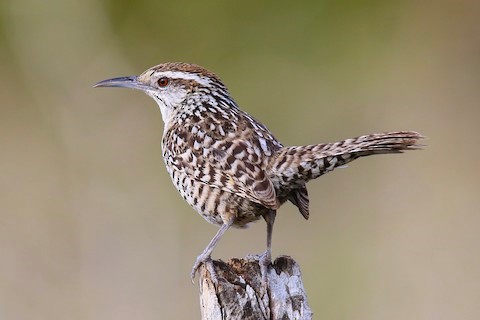
Yucatán Wren. (Ejido San Salvador, Yucatán, Mexico; January 21, 2017.) © Arco Huang
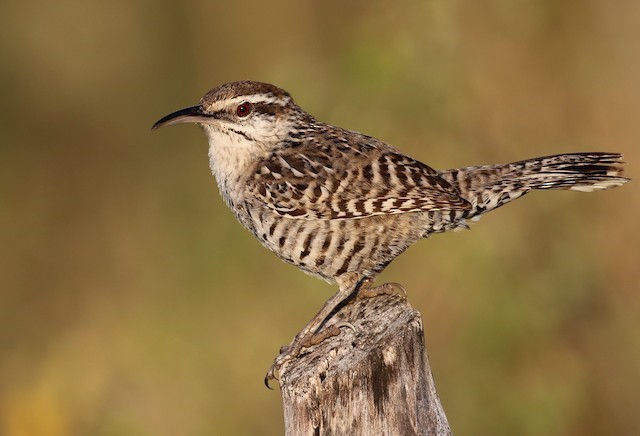
Yucatán Wren. (Ejido San Salvador, Yucatán, Mexico; February 20, 2018.) © Matthew Grube
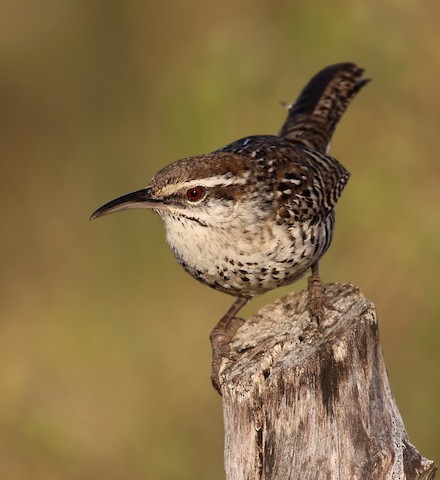
Yucatán Wren, with mostly unspotted throat and chest. (Ejido San Salvador, Yucatán, Mexico; February 20, 2018.) © Matthew Grube
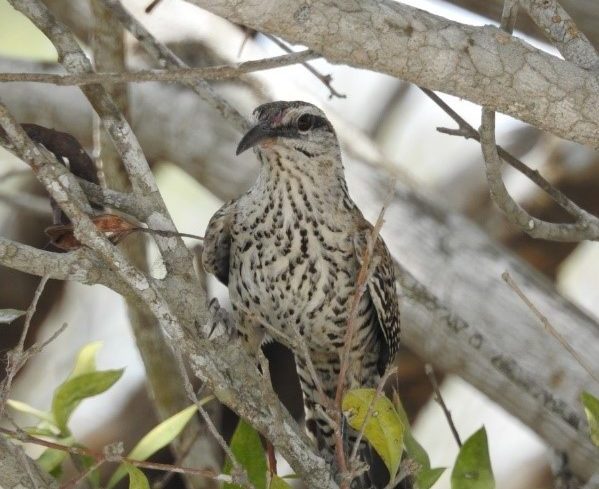
Yucatán Wren, showing extensively spotted underparts, including the throat and chest. (Yucatán, Mexico; May 4, 2019.) © Jana Nicte-ha Almeida Ramirez

Yucatán Wren, showing extensively spotted underparts, including the throat and chest. (Yucatán, Mexico; May 4, 2019.) © Jana Nicte-ha Almeida Ramirez

Yucatán Wren. (Río Lagartos, Yucatán, Mexico; December 26, 2017.) © Aidan G. Kelly
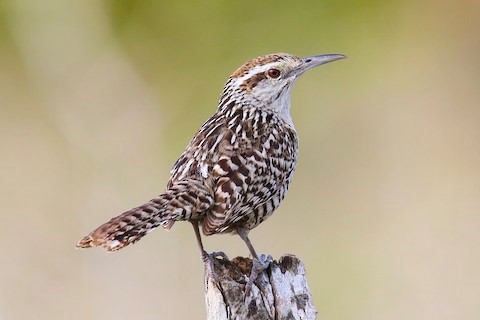
Yucatán Wren. (Ejido San Salvador, Yucatán, Mexico; January 21, 2017.) © Arco Huang

Yucatán Wren, appearing buffy overall. (Chelem, Yucatán, Mexico; February 3, 2018.) © Robert Curry
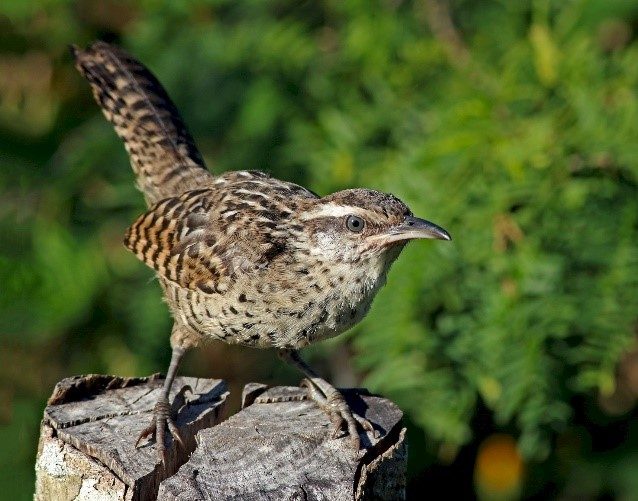
Yucatán Wren, juvenile—note grayish eye. (Río Lagartos, Yucatán, Mexico; February 18, 2014.) © Ian Davies
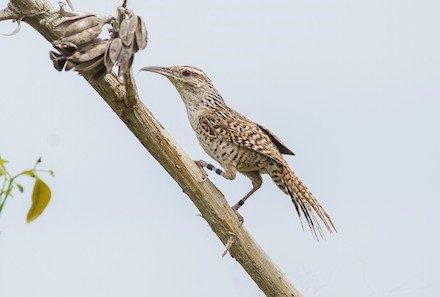
Yucatán Wren, a pale individual with mostly unmarked underparts. (Chuburná, Yucatán, Mexico; June 2, 2019.) © Roni Martinez
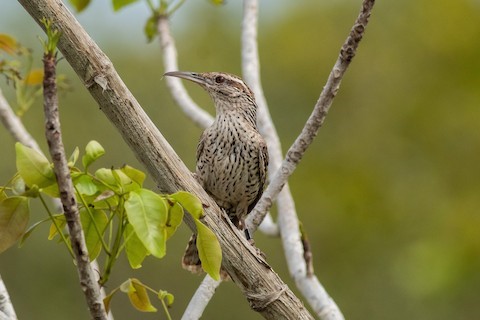
Yucatán Wren, showing the exceptional length of its bill. (Chuburná, Yucatán, Mexico; June 2, 2019.) © Francis Canto, Jr.
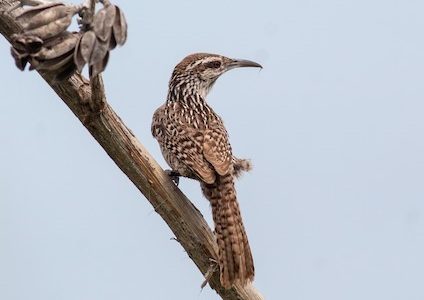
Yucatán Wren, dorsal view showing heavily barred, spotted, and striped upperparts. (Chuburná, Yucatán, Mexico; June 2, 2019.) © Francis Canto, Jr.
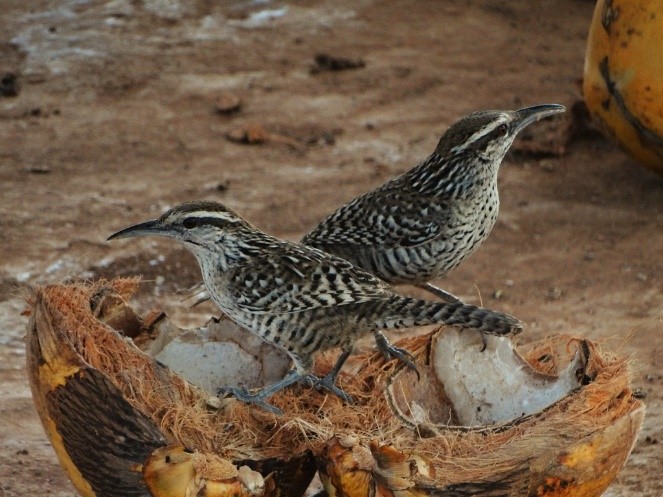
Yucatán Wren. (Yucatán, Mexico; February 21, 2017.) © Alex Pacheco
Notes
Monotypic species.
References
Brewer, D., and B.K. MacKay. 2001. Wrens, Dippers, and Thrashers. Yale University Press. New Haven.
eBird. 2019. eBird: An online database of bird distribution and abundance. Cornell Lab of Ornithology, Ithaca, N.Y. http://www.ebird.org. (Accessed November 29, 2019.)
Howell, S.N.G., and S. Webb. 1995. A Guide to the Birds of Mexico and Northern Central America. Oxford University Press, Oxford.
Kroodsma, D., D. Brewer, and E. de Juana. 2019. Yucatan Wren (Campylorhynchus yucatanicus). In Handbook of the Birds of the World Alive (J. del Hoyo, A. Elliott, J. Sargatal, D.A. Christie, and E. de Juana, eds.). Lynx Edicions, Barcelona. https://www.hbw.com/node/58094. (Accessed November 29, 2019.)
